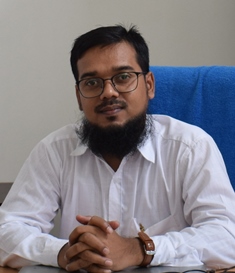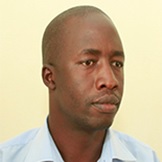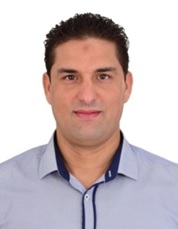Latest Articles
Original Research Article
ABSTRACT
Introduction: Despite improvements in health, maternal mortality remains a global public health problem. The haemorrhages of the third trimester are still responsible for a heavy mortality. Objectives: Contribute to the study of immediate postpartum hemorrhages (PPH) at the maternity department of Nabil Choucair Health Center (NBHC). Methodology: It was a retrospective descriptive and analytical study on cases of PPH treated between of January 1st, 2011 and December 31th, 2015 at the maternity department of NBHC. We included any patient who was being cared for in the maternity waedfor a PPH. We studied the sociodemographic characteristics of the patients, identified etiological factors and evaluated treatment and prognosis. Results: The frequency of PPH was 1.1%. The mean age of the patients was 27.5 years. Primiparas (34.3%) and pauciparas (33.3%) were the most affected. The main etiologies of PPH were traumatic lesions (39.6%), uterine atony (31%) and retained placenta (25.2%). Medical management was based on resuscitation using filling fluids, transfusion (22.4%) and administration of oxytocin (51.4%) and prostaglandin analogs associated with oxytocin (48.6%). Obstetrical care consisted of uterine revision and uterine massage (59.8%), uterine revision alone (20.4%) and uterine revision, uterine massage and sandbag placement (19.1%). The mechanical means were mainly represented by intra-vaginal tamponade (69.2%) and intrauterine tamponade (24.4%), including 2 with the balloon. The surgical treatment included 18 hemostasis hysterectomies (13.1%) and 118 (85.5%) restorative sutures. The main maternal complication of PPH was anemia (71%). The lethality related to PPH was 6.8% with 14 deaths including 7 from blood clotting disorders. Conclusion: The diagnosis and precise estimation of postpartum hemorrhage are the basic elements of the course to be taken.
ABSTRACT
DEAR EDITOR
Congenital uterine anomalies arise from abnormal embryological development of the paramesonephric ducts (or Mullerian ducts) [1]. Various anomalies result from arrested development of the uterovaginal primordium during embryonic period, by incomplete or failed development of parts of one or both paramesonephric duct, incomplete fusion of the paramesonephric ducts or incomplete canalization of the vaginal plate [2]. Prevalence of all types of female congenital reproductive tract malformations is estimated at 4%–7% and they are mostly benign [3].
Uterine didelphys is a rare type of anomaly with estimated prevalence of 0.3%, caused by complete failure of fusion of the inferior parts of the paramesonephric ducts resulting in separate uterine cavities with two cervices and a double or single vagina. Sometimes a longitudinal or transverse vaginal septum varying from thin and easily displaceable to thick and inelastic may also
Original Research Article
ABSTRACT
Introduction: The current strategy to combat maternal and infant mortality is essentially based on three pillars which are family planning, childbirth assisted by qualified personnel (midwife, nurse, doctor) and emergency obstetric and newborn Care (EmONC). Objective: Evaluate the care of parturients in the gynecology and obstetrics department of the Institute of Social Hygiene in Dakar. Patients and Methods: We conducted a retrospective and descriptive study conducted over a period of six months from January 1st to June 30th, 2019 on the management of births in the Gynecology and Obstetrics department of the Hospital Institute of Social Hygiene in Dakar. We studied the epidemiological, clinical parameters of parturients and the prognosis of childbirth. Results: We collected 689 birth records, representing 8.2% of the overall activities of the service and 69% of emergency activities. The epidemiological profile of our parturients was that of a young primipare (41%) with an average age of 27.4 years, married (96%) with a history of cesarean section (14.6%), who had completed at least 4 prenatal consultations (58.1%) and carried a pregnancy to term (72%). The evacuees represented (43.7%) parturients and came mainly from outside the southern health district (61.8%). More than half of the parturients had given birth vaginally (55.3%). The cesarean section and instrumental extractions accounted for 44.6% and 0.1%, respectively. We recorded 706 births, 98% of which were alive. The stillbirth (20) was distributed as follows: 9 fresh stillbirths and 5 macerated stillbirths. Conclusion: The current strategy to combat maternal and infant mortality must be strengthened on the ground by properly filling out birth records, promoting and using partograms and recording fetal heart rate.
ABSTRACT
The word paraphimosis is derived from two Greek words: "para" (meaning "beyond" or "resembling") and "phimosis" (meaning "to muzzle" or "to restrict"). It is a true urological emergency. [1, 2]. We report a case of iatrogenic paraphimosis after urinary catheterization and review the literature. This is a 2-year-old male patient who presented to the urology department with plaintive cries, painful penile swelling, fever, and vomiting after transurethral catheterization for acute urinary retention. Physical examination revealed a retracted foreskin behind the corona of the glans with swollen and edematous preputial mucosa. He also had a fever of 38.2°C. Paraphimosis is a rare urological emergency. In 15 years of urological practice, we have recorded only one case. Burstein and Paquin, from Canada, reported 46 patients between October 2013 and September 2016 [18]. If left untreated, it can lead to catastrophic penile lesions. The treatment was surgery. It is important to return the foreskin to its original position after urethral catheterization or cystoscopy.
Original Research Article
ABSTRACT
Background: Diabetes mellitus foot deformities (FD) comprise all the pathological changes in the foot of a person with diabetes mellitus. The current global burden of FD is worrisome and contributes to the global burden of disability and reduction in the quality of life. Objectives: This study evaluated the prevalence, spectrum of foot deformity and the associated risk factors in subjects with type 2 DM. Materials and Methods: This was a descriptive cross-sectional study involving 98 consenting T2DM subjects at Nnamdi Azikiwe University Teaching Hospital, Nnewi, South-eastern Nigeria. Relevant socio-demographic, clinical and Diabetic Neuropathy Symptom (DNS) score data were collected using a structured questionnaire and the DNS questionnaire. Clinical evaluations that included detailed foot, anthropometric, blood pressure measurements, biothesiometry, monofilament testing and lower limb doppler ultrasonography were done. Data was analysed using SPSS version 25. Result: A total of 98 T2DM subjects were evaluated and comprised 51% and 49% male and female subjects, respectively, with a mean age of 59.61 ± 11.62 years and mean DM duration of 11.11 ± 8.48 years. A total of 62.2% of the subjects had foot deformity, of which 30.6%, 4.1%, 13.3%, 8.2%, 7.1% and 4.1% had prominent metatarsal head, pes cavus, pes planus, claw toe, hammer toe, and mallet toe, while 11.2%, 4.1%, 9.2%, 4.1%, 2.0%, 43.95, 3.1%, 1.0% and 28.6% of the subjects had hallus rigidus, hallus varus, hallus valgus (bunion), bunionette, Charcot foot, muscle atrophy, disarticulation, amputation and limited joint mobility, respectively. Foot deformity showed significant association with the age of the subjects, educational level, DM duration, glycaemic control, global obesity and presence of neuropathy. Conclusion: The prevalence of FD in T2DM subjects from this study was very high and FD was significantly associated with some modifiable risk factors that included educational level, glycaemic control and glob
Original Research Article
ABSTRACT
Introduction: The objective of this study was to examine the profile of patients admitted to the paediatric emergency department at Dubréka Prefectural Hospital. Methods: Our study was conducted in the paediatric ward of Dubréka Prefectural Hospital. It was a dynamic descriptive study lasting six months, from 1 April to 30 September 2024. We included in our study all children aged 0 to 15 years admitted to the paediatric ward of Dubréka Prefectural Hospital for a medical emergency. A medical emergency was defined as a situation requiring immediate medical intervention. Results: We recorded 176 emergency cases out of 882 admissions, representing a frequency of 20%. Children under 5 years of age were the most represented with 130 cases, or 74%. The average age of our patients was 3.6 years, with extremes of 0 and 14 years. Females predominated, with a sex ratio of M/F = 0.87. Fever was the most common reason for consultation (96.59%). Sixty-three patients were referred from another healthcare facility (35.8%). One hundred and twenty-eight patients were admitted between 8 a.m. and 3 p.m. (72.2%). The majority of patients arrived at the hospital by public transport (86.36%). Ninety-nine patients had received medical treatment before arriving at the hospital (62.26%). Malaria was the most common cause (36.96%), followed by bronchopneumonia (17.07%). Conclusion: Communication efforts aimed at changing behaviour must undoubtedly continue at the population level in order to combat delays in the treatment of paediatric medical emergencies, thereby optimising therapeutic benefits and minimising sequelae.
ABSTRACT
Background: Caesarean section is one of the most common surgical procedures and it can be complicated by postpartum haemorrhage, requiring additional suturing. Retained surgical needles during Caesarean section (CS) are rare but serious complications, and are particularly challenging in low-resource settings. We present a case managed in a remote hospital in Lamu County, Kenya without access to advanced imaging or specialist input at the time of surgery. Case Presentation: A 26-year-old patient underwent emergency CS at 38 weeks for failure to progress. Postpartum haemorrhage from the placental bed in the posterior uterine wall happened and required suturing. Unfortunately, the needle became detached and was lost within the myometrium. The needle could not be retrieved intraoperatively because of continuing bleeding, leading to poor visibility and the need to close the uterus. Therefore, the decision was made to leave it in situ for later retrieval. Further evaluation and discussion with a multidisciplinary team were conducted. Surgical removal was performed because of the potential risks. No advanced imaging including CT or fluoroscopy was available, and ultrasound scanning was successfully used to localize the needle preoperatively and also guide the retrieval intraoperatively, through a posterior uterine wall incision. The patient's recovery was uneventful and she was discharged on the third postoperative day. Conclusion: This case illustrates the feasibility and effectiveness of using ultrasound to manage a retained uterine needle in a low-resource setting. Real-time ultrasound is safe, minimally invasive, and available, and helps avoid complications. Early communication with the patient and multidisciplinary teamwork were key to successful outcomes.


















